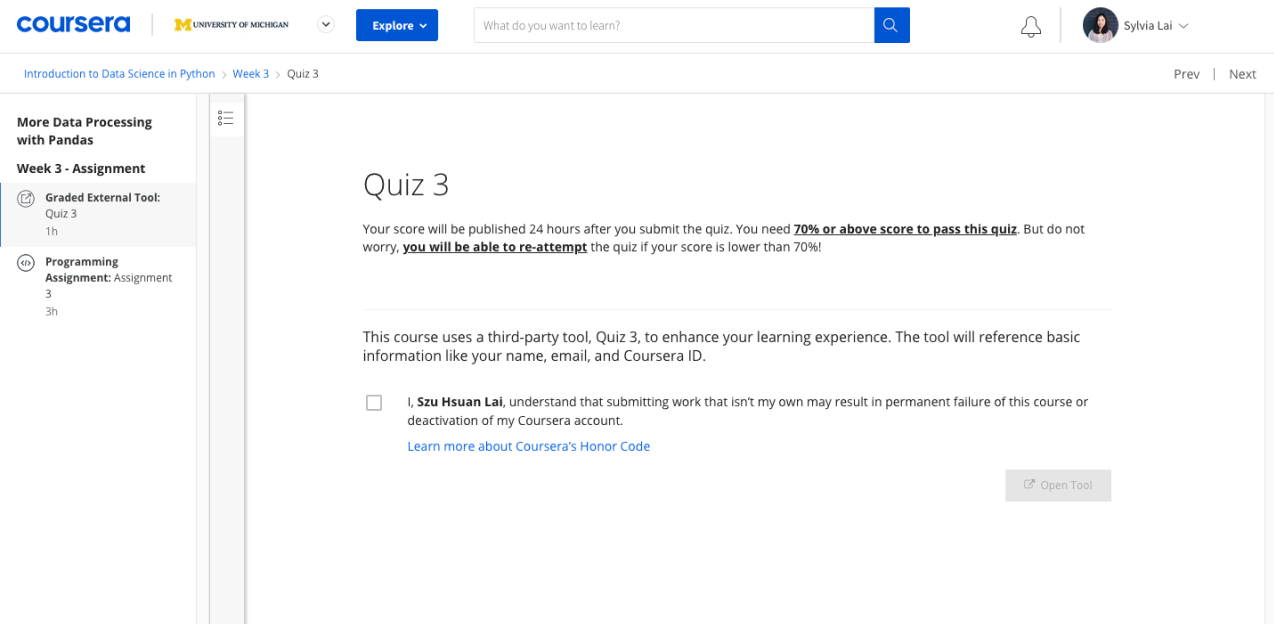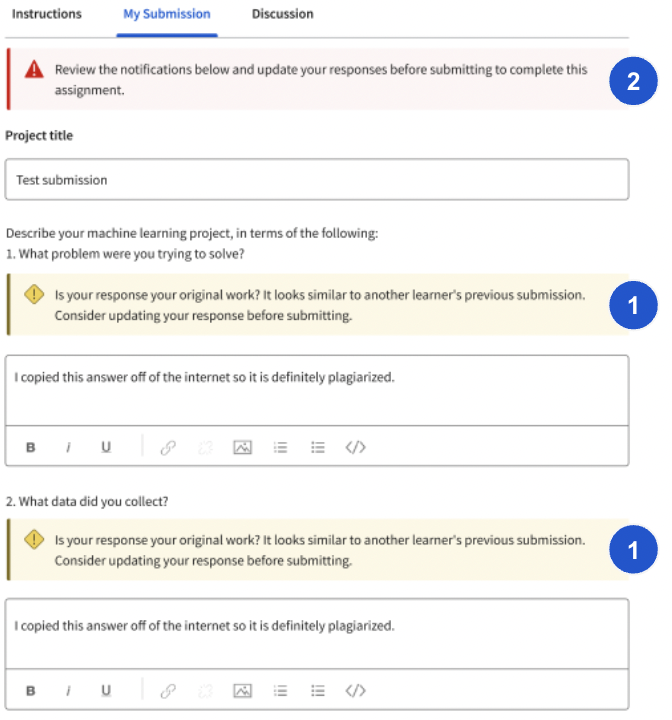Coursera: Academic integrity
From the partner perspective, academic integrity had become an issue. Students of their universities were also taking courses on the Coursera platform. The high-volume increase of learners on the platform also increased plagiarism and cheating.
It was up to me and Chi, our product manager, to design features that would reduce the number of touch points with learner services, relay issues to partners, and increase academic integrity on the platform.
Could it be done in an emotionally intelligent way—without pointing the blame and shaming the learner? We’d soon find out.
SERVICES Stakeholder interviews, journey mapping, personas, competitive analysis, data analysis, product strategy, content strategy
PROJECT Understand needs and pain points related to academic integrity and forecast content-first product solutions
STRATEGY Define problems and solutions via discovery and implement detection, deterrence, and monitoring features
RESULTS Academic integrity features reduced plagiarism by 75%+ combined.
The challenge
The solution
Stakeholder interviews
First things first, I needed to understand who was being affected by academic integrity or the lack thereof. After doing some investigatory work, I found that campus administrators, university faculty, learner services, teaching and learning consultants, and partner success managers could provide a wealth of insight. I ran 10 stakeholder interviews with individuals and groups of 3. It resulted in a clearer picture of the present state of academic integrity at Coursera.
Journey mapping
The stakeholder interviews led to the auditing of the platform and the creation of a learner journey map and partner journey map. Until then, academic integrity was chiefly being taken care of manually by learner services. Because of this, only a small percentage of cases were handled due to time constraints and zero automation.
Personas
The stakeholder interview notes and journey mapping helped to define the personas along with their needs and pain points. By diving into each personas mental model, features could be shaped to streamline into their day-to-day process. It was becoming clear that we might be able to tackle academic integrity for online education. The first platform to do so.
Data
Prior to having a sole team for academic integrity, 2 features had been implemented: Coursera Honor Code and paste deterrence. I had written copy for both of these learner flows, which were validated through a/b tests. Over the course of a year, data analysis was conducted which informed new features.
Competitive analysis
Gathered by the PM, we found that not many universities had public student policies to explain how they handled cases of academic integrity. Four in particular allowed me to develop a content strategy, including prioritizing language that was neutral and informative to reduce plagiarism and cheating.
New features
Through discovery and shaping, we were able to strategize and define solutions for new features. These new features would help to detect and deter learners from plagiarizing and cheating on the platform. They would also stop the manual work provided by the learner services team and automate flagged submissions to the university directly on a dashboard.
Writing samples
Academic integrity consists of 4 features to detect and deter learners from plagiarizing and cheating. These features include:
Honor code
Paste deterrence
Peer review plagiarism blocker
Plagiarism portal (screenshots not available)
Each of these features was a/b tested to collect quantitative data on the content itself. My theory was that a neutral, informative, and empathetic tone would encourage learners to submit original work.
In contrast to what gave us the results we were after, I also wrote copy that was more straight-forward, formal, and less empathetic.
Note: I’m unable to show a/b copy and test results due to NDA policies at Coursera.
Honor code
I wrote honor code copy that appeared to the learner on written assignments, quizzes, and programming assignments.
The terminology aligned with legal’s requirements and the honor code that appeared in the learner help center.
Paste deterrence
How can you discourage learners from plagiarizing written assignments through paste deterrence without assuming that they did so?
That was the concept that I brought to the team, recommending that we a/b test copy on each end of the spectrum. On the one side, I tried a tone that was strict and formal. While on the other, I was neutral and informative to bring awareness.
The statistically significant results showed that a non-blaming approach decreased plagiarized submissions by 10% and peer flagging by 23% in 1 month.
Peer review plagiarism blocker
After seeing excellent results that enabled Coursera to increase academic integrity on the platform, a third feature was tested in front of 10% of learners before going live to all.
While being tested on 60% of learners, the plagiarism blocker decreased plagiarized submissions by 75%. And brought the similar submission rate (SSR) down from 3.1% to 0.8%.
All through emotionally intelligent UI text that brought awareness to the learner’s behavior rather than condemnation.












